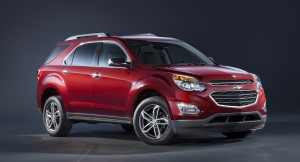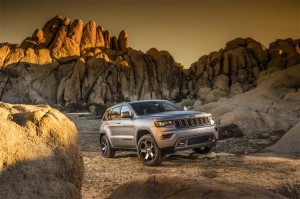
Volkswagen posted another monthly sales increase with February's 12.7% rise. The Golf family led the way with a 60.3% jump.
Steady gains by General Motors, Nissan and Audi helped keep the industry’s sales momentum rolling during February, however, not all the makers enjoyed improvements as Ford Motor Co.’s and Fiat Chrysler’s sales slipped.
GM reported record sales of crossovers, large SUVs and pickups in February, bolstering the company’s retail market share, which was up more than one-half percentage point versus a year ago. Average transaction prices, which reflect what customers pay after sales incentives, also set a February record.
“Our retail-focused go-to-market strategy is delivering robust results,” said Kurt McNeil, U.S. vice president, Sales Operations. “All of our brands grew their average transaction prices by healthy amounts, and we delivered solid growth in the industry’s fastest-growing and most profitable segments.”
Nissan Group reported a 3.7% increase in sales during the month. Nissan division also was bolstered by strong sales of trucks and utility vehicles, which led to a small increase of 1.2% while its Infiniti luxury division enjoyed a strong February with a 32.5% jump.
(U.S. new car sales expected to rise slightly in February. Click Here for the story.)
Audi of America’s February sales increased 17% to 13,741 vehicles. Both SUVs and sedans performed well, with the Q5, Q7 SUVs and the A4 sedan leading the volume gains. Audi achieved its best February sales in the U.S., marking the 74th straight monthly record. The previous February record was set last year. American Honda Motor Co. Inc. set a new total February sales of 121,686 Honda and Acura vehicles, an increase of 2.3% over February 2016 — all of which was driving by Honda division’s jump of 4.3%.
And perhaps a pleasant surprise for an automaker that can use all of the good news it can get, Volkswagen posted sales gains. VW reported sales of 25,145 units, a 12.7% increase over February 2016. The Golf and Beetle families of cars led the way with 60.3% and 45.8% jumps respectively.
Toyota Motor North America was among those posting a drop off with a 7.2% decline in February. Toyota division fell 5.4% while Lexus slid 20.8%.
Ford Motor Co., however, reported its sales dropped 4% last month despite steady growth in its sales of pickup trucks and SUVs.
“We continue seeing strong consumer demand for the highest-series Super Duty pickups and the all-new F-150 Raptor, plus greater availability of 2017 model year F-150s,” said Mark LaNeve, vice president, U.S. Marketing, Sales and Service.
“This drove a $3,600 increase in average transaction prices for F-Series last month alone, Lincoln had a $2,100 increase, ultimately delivering an overall company transaction price increase of $1,900 per vehicle.”
F-Series sales were up 9%. Lincoln sales totaled 8,744 vehicles, a 9% increase. Lincoln MKC, up 12%, MKX, up 1%, and all-new Continental sales of 1,079 cars fueled the growth.
Fiat Chrysler struggled last month with its sales of 168,326 units representing a 10% decrease compared with sales in February 2016 (187,318 units). Much of that was driven by the automaker’s 26% slide in fleet sales, part of a cognizant effort to reduce reliance on non-retail sales business.
(Leasing levels surge, raise concern. Click Here to see why.)
Ram Truck brand sales were up 4% in February, compared with the same month a year ago. Three Jeep brand vehicles rose too: Renegade with an 11%, Grand Cherokee, 11% and Wrangler at 2%. Three Dodge vehicles also recorded year-over-year sales increases led by Journey’s 55%. Sales of the Fiat 500 and the all-new Chrysler Pacifica minivan were up year over year as well.
The analysts at Kelley Blue Book said the estimated average transaction price (ATP) for light vehicles in the United States was $34,352 in February 2017. New car prices have increased by $757 (up 2.3%) from February 2016, while falling $328 (down 0.9%) from last month.
“New-car transaction prices continued to rise in February, climbing more than 2% year-over-year,” said Tim Fleming, analyst for Kelley Blue Book.
“Once again, prices are up due to the mix of sales skewing more toward SUVs and away from cars, as keeping the sales mix of SUVs-to-cars steady from last February would have resulted in flat transaction prices. Even though sales now appear to be slowing down in the industry, the boom in utility vehicles is managing to boost profits for many automakers.”
Although makers are netting more money on each sale, that’s being offset by rising inventory levels, according to Jessica Caldwell, Edmunds executive director of Industry Analysis:
“Inventory is starting to swell, which is concerning considering that we’re still months away from the peak summer selling season,” she noted in a statement.
(What is the U.S. auto market likely to look like this year? Click Here for some educated guessing.)
“Days to turn has reached its highest level since July of 2009, and new vehicle inventory was up 9% year-over-year in February. The automakers are in a tricky spot: aggressive incentives are already starting to eat into profits and residuals, but it takes discipline to pull back the production reins in what’s still a fairly strong market.”


